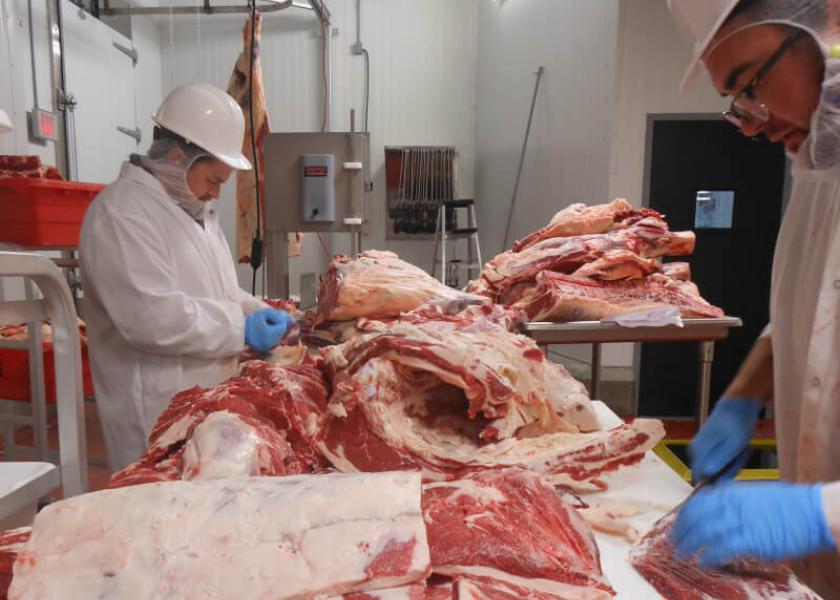Cornett: A+ on APLUS

Whoa. There’s a law in our very own congress that makes sense. Whaaa?
Yes. The ponderously named, “Amplifying Processing of Livestock in the United States Act,”* sponsored by Rep. Vicky Hartzler (R-MO) and Rep. Jimmy Panetta (D-CA) is designed to make it easier for local livestock market operators to open regional packing plants.
The International Livestock Congress in Houston recently featured a discussion on the perils of starting new processing plants. The government is wanting to shower dollars on the concept. Several projects are on the drawing boards.
Regional processing plants are not likely to be an easy success, but we need them so badly. So much more badly than we need crabs-in-a-bucket laws telling big feeders their marketing methods are too efficient to be “fair.” Regional plants offer so much promise. Promise to the midwestern and northern plains feeders who are so out of position. Promise for innovative beef marketing programs. Promise for local feeding businesses to feed local calves. Jobs.
And, for everybody, some hedge against bronterocs.**
This should be nothing more than a housekeeping bill. The Packers and Stockyards act never should have been interpreted as forbidding local sale barns from running processing plants, anyhow. It was aimed at the big packers.
I’ve been arguing for a while that, while I keep a Jack Elam eye*** on the big packers, I think we’re all too focused on their recent windfall profits. And if history is any guide, their profits**** will shrink as cattle numbers shrink.
You may have heard that the president spoke at a recently unionized Amazon plant this week. He said glowing things about the need for more union power. It made me think of the scariest bronteroc of all. Remember what happened to the market after ONE plant caught fire? What if one of the four bigguns was shut down, nationally, by a union strike?
The industry needs to have at significant capacity beyond the big four. Yes, you can argue, as most cowfolk I know seem to, that we should break up the packers. But if we do that—meaning Congress does that—you put the disintegrated packers in the same bargaining position feedyards are in now. They might be inclined to bid harder to buy cattle, but would that be offset by them getting bullied by their still-consolidated customers?
I know. There are people who will tell you you’re not in the beef business. But if those boys don’t sell beef they aren’t going to buy cattle.
I wish I could do a chart. I don’t know how to make my computer take a spread sheet and make a chart. But if you go to the USDA ERS meat spread site and you open the Choice Beef Spreads spread sheet and make yourself a graph or bar chart comparing Farm Value to Wholesale Value to Retail Value, you’ll see that the bulk of the increase in the spread the last 50 years is at the retail level.
Call me a packer-stooge if you want, but the biggest and fastest growing piece of the price spread comes after the packer. I have to take you back to the markup in a pair of calf skin boots. The more middlemen spend turning cow parts into stuff people want to buy, the bigger the price spread. And retailers are doing more, and spending more, than they used to.*****
That defense of big packers said, we still need regional plants. That isn’t going to be easy. They will need some sort of unique trick to compete. Maybe deep pockets. Maybe the sort of captive supplies that would come with a co-op structure. Maybe a well-marketed niche product. There are a lot of successful examples out there. But the fact is, the big four have created, and survived in, a dog-eat-dog business. And they aren’t afraid to bite.
They’ve got muscle buying. They’ve got muscle selling. They’ve got economies of scale.
That said, we probably need more shackle space, but we certainly need more redundancy. Joe Biden is offering up free money. They’re talking about reducing permitting. It’s possible. If it can get into strong hands in the right geography, regional plants could provide a valuable service. I can think of nobody better situated to make miracles happen than regional markets. Who better to organize a bunch of producers to take control of their own destiny? The proprietors are universally good businessmen. They typically enjoy good relations with the producers they serve. And, um, not to be negative, the consolidation writing on the wall presents them with a challenging future if they don’t find a place at the table of the future.
So, turn ‘em loose. Good law.
*A laborious arrangement of words to get to the acronym “APLUS.” Congress people get to grade their own work.
**If you don’t know what a broneroc is, that’s on you. I’m not going to back to that very stale “black swan” thing. You might get a black swan, you might not. But we know we’re going to get eaten by a bronteroc. We just don’t know what that means. Well know it when we see it.
*** This is me wondering why we don’t hear more about that JBS price-fixing settlement.

****Profits, that is. Not so much margins. Packers’ costs are increasing like everything else. Wages are up. They’re paying hiring bonuses in some locations. That’s all going into those margins.
https://www.indeed.com/q-Tyson-jobs.html?vjk=fb11455b09712263







